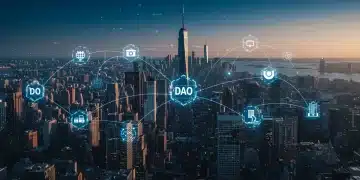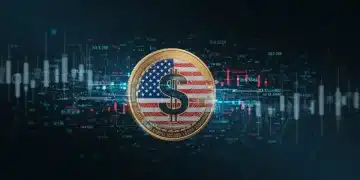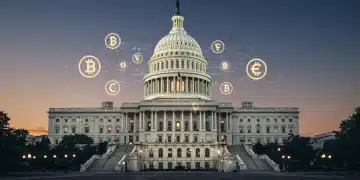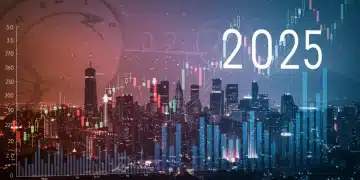NFTs in US Digital Economy: 2025 Regulatory & Market Analysis
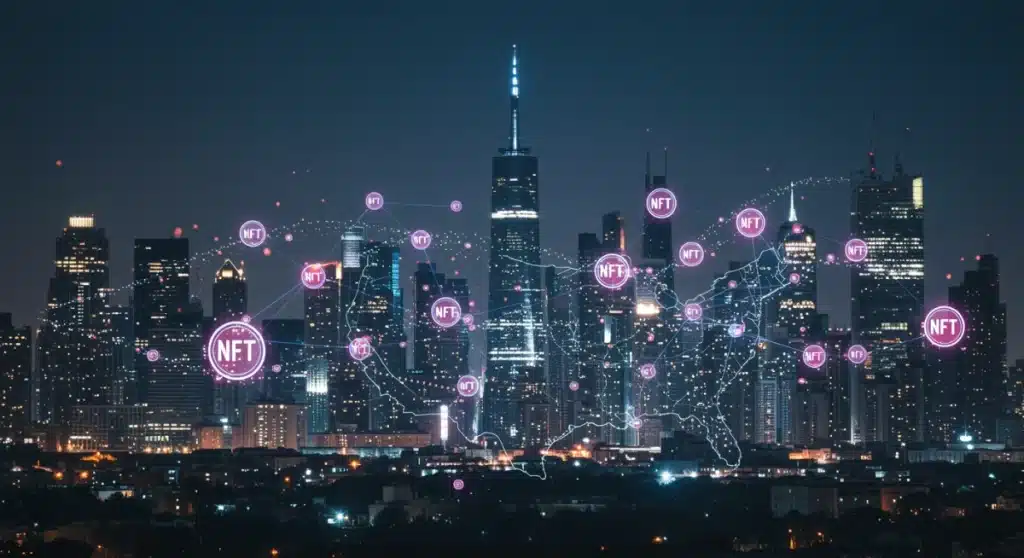
Recent updates on the evolving role of NFTs in the U.S. digital economy reveal significant shifts in regulatory frameworks and market dynamics for 2025, providing critical insights for stakeholders.
NFTs US Digital Economy is currently undergoing a pivotal transformation, with recent developments signaling a clearer, albeit complex, path for digital assets. This analysis delves into the latest regulatory forecasts and market shifts expected in 2025, providing timely and factual information on what these changes mean for participants in the U.S. digital landscape.
Understanding the evolving NFT landscape in the US
The non-fungible token (NFT) market in the United States continues its rapid evolution, moving beyond speculative art collectibles to encompass a broader range of applications. As 2025 approaches, stakeholders are keenly observing how technological advancements and shifting consumer behaviors are reshaping this nascent but impactful sector. The initial hype cycle has given way to a more mature, albeit still volatile, market seeking stability and utility.
Key drivers include the integration of NFTs into mainstream industries such as gaming, entertainment, and real estate, alongside a growing understanding of their potential for digital identity and supply chain management. This expansion necessitates a re-evaluation of existing market structures and a proactive approach to potential challenges. The fundamental promise of NFTs—unique, verifiable digital ownership—remains a powerful force, attracting both innovators and traditional enterprises looking to leverage blockchain technology.
From speculative assets to utility tokens
- Gaming Integration: NFTs are increasingly used for in-game assets, enabling true digital ownership and fostering player-driven economies.
- Entertainment and Media: From digital music rights to exclusive fan experiences, NFTs offer new monetization and engagement models.
- Real Estate Tokenization: Fractional ownership of physical and virtual properties through NFTs is gaining traction, promising increased liquidity and accessibility.
As these use cases mature, the focus shifts from mere digital collectibles to tokens that provide tangible utility and value within specific ecosystems. This transition is crucial for the long-term sustainability and mainstream adoption of NFTs within the broader U.S. digital economy.
Navigating the 2025 regulatory outlook
The regulatory environment for NFTs in the U.S. is rapidly developing, with 2025 anticipated to bring increased clarity and potentially stricter oversight. Federal agencies, including the SEC, CFTC, and Treasury Department, are actively exploring how to classify and regulate these digital assets, aiming to balance innovation with investor protection and financial stability. The lack of a unified regulatory framework has been a significant hurdle, leading to uncertainty for businesses and investors alike.
Recent statements from Treasury officials on January 15, 2024, indicated a push for comprehensive digital asset legislation, potentially categorizing some NFTs as securities or commodities depending on their characteristics and utility. This move is driven by concerns over money laundering, illicit finance, and consumer fraud within the largely unregulated NFT space. Industry experts predict a patchwork of regulations initially, with a gradual move towards a more harmonized approach.
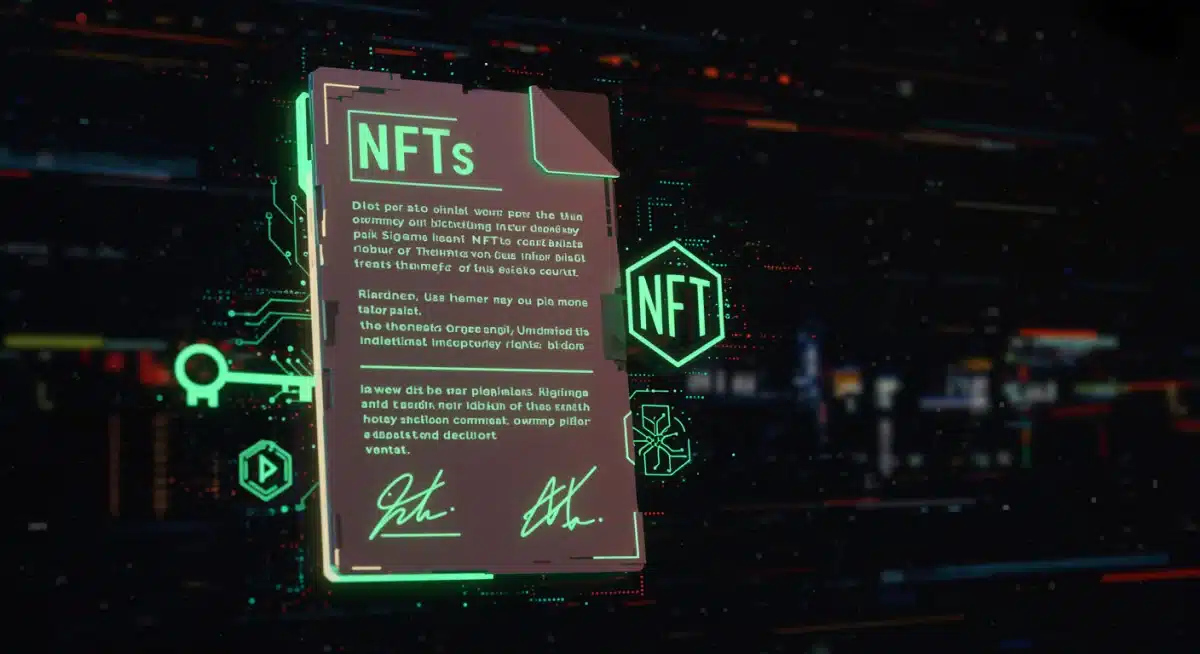
Key regulatory considerations
- Security vs. Commodity Classification: The fundamental question of whether an NFT constitutes a security (under SEC jurisdiction) or a commodity (under CFTC jurisdiction) remains central. The Howey test is frequently applied, but its suitability for novel digital assets is debated.
- AML/KYC Compliance: Increased requirements for anti-money laundering (AML) and know-your-customer (KYC) protocols are expected for platforms facilitating NFT transactions, aligning with broader financial regulations.
- Consumer Protection: Regulators are focusing on safeguarding consumers from scams, deceptive practices, and market manipulation, potentially leading to disclosure requirements and enhanced transparency.
The ongoing dialogue between policymakers and industry leaders is critical in shaping pragmatic regulations that foster innovation without stifling growth. Businesses operating in the NFT space must prepare for a more formalized and scrutinized environment, adapting their operations to comply with emerging legal standards.
Market analysis: growth, challenges, and opportunities
The U.S. NFT market, while experiencing periods of significant volatility, continues to demonstrate underlying growth and diversification. As of late 2024, transaction volumes have stabilized after earlier peaks, with a notable shift towards utility-driven NFTs and institutional adoption. Data from leading analytics firms on October 20, 2024, shows a steady increase in the number of unique NFT holders, indicating broader participation beyond early adopters.
Challenges persist, including market liquidity, intellectual property rights enforcement, and user experience complexities. However, these challenges also present opportunities for innovation, particularly in developing more intuitive platforms, robust legal frameworks for digital ownership, and interoperable blockchain solutions. The convergence of Web2 and Web3 technologies is expected to unlock new avenues for growth, making NFTs more accessible to a mainstream audience.
Emerging market trends
The market is witnessing a move away from purely profile picture (PFP) collections towards NFTs embedded with real-world benefits or integrated into digital ecosystems. This includes loyalty programs, event ticketing, and digital fashion, where the NFT acts as a verifiable pass or unique item. Additionally, institutional investors are beginning to explore NFTs as alternative assets, leading to increased demand for regulated investment products.
The rise of fractionalized NFTs is also democratizing access to high-value assets, allowing multiple individuals to own a share of a single NFT. This innovation addresses the high entry barrier for certain digital collectibles and art pieces, broadening the investor base. Furthermore, the development of scalable and energy-efficient blockchain networks is reducing transaction costs and environmental concerns, making NFTs more appealing to a wider audience.
Technological advancements driving NFT adoption
Technological innovation is at the heart of the expanding role of NFTs in the U.S. digital economy. Advancements in blockchain infrastructure, interoperability solutions, and user-friendly platforms are significantly lowering barriers to entry and expanding the capabilities of NFTs. These developments are crucial for moving NFTs from niche applications to widespread mainstream adoption, and will be particularly impactful by 2025.
Layer 2 scaling solutions, such as Polygon and Arbitrum, are addressing the scalability and high transaction fee issues prevalent on earlier blockchain networks like Ethereum. This allows for faster, cheaper, and more efficient NFT transactions, making them practical for everyday use cases. Cross-chain bridges are also improving interoperability, enabling NFTs to move seamlessly between different blockchain ecosystems, thereby increasing their utility and liquidity.
Innovations fueling growth
- Improved User Interfaces (UI/UX): Platforms are becoming more intuitive, simplifying the process of buying, selling, and managing NFTs for non-technical users.
- Enhanced Security Features: Advancements in smart contract auditing and wallet security are bolstering confidence in the safety of NFT transactions.
- Dynamic NFTs: The emergence of NFTs that can change based on external data or conditions (e.g., real-world events, game progression) is opening up new creative and functional possibilities.
These technological strides are not only improving the functionality of NFTs but also fostering a more robust and secure environment for their development and deployment. The increased efficiency and reduced costs associated with these advancements are expected to significantly accelerate the integration of NFTs into various digital sectors, solidifying their place in the NFTs US Digital Economy.
Impact on traditional industries and new business models
The proliferation of NFTs is forcing traditional industries to re-evaluate their existing business models and explore new avenues for value creation. From intellectual property management to customer loyalty programs, NFTs offer disruptive potential across a spectrum of sectors. This shift is not merely about adopting a new technology but about fundamentally rethinking how digital assets are created, owned, and exchanged, especially within the U.S. market.
The music industry, for instance, is experimenting with NFTs to grant artists more control over their work and provide fans with unique experiences and revenue-sharing opportunities. Similarly, luxury brands are leveraging NFTs for authentication, combating counterfeiting, and creating exclusive digital collectibles that enhance brand engagement. These applications demonstrate a clear move beyond simple digital art into practical, value-adding functions.

Reinventing engagement and ownership
Traditional industries are finding that NFTs can deepen customer relationships by offering verifiable ownership of digital collectibles or exclusive access to communities and events. This creates a new paradigm for loyalty programs, moving from points-based systems to asset-based rewards that hold intrinsic and speculative value. The ability to track ownership and provenance on a blockchain also introduces unprecedented transparency and trust.
New business models are emerging that are entirely built around NFTs, such as decentralized autonomous organizations (DAOs) that govern NFT projects or play-to-earn gaming models where players earn NFTs and cryptocurrency through gameplay. These innovative structures challenge conventional corporate hierarchies and incentivise community participation, reflecting a broader trend towards decentralization in the digital economy.
Future trajectory: predictions for NFTs in 2025 and beyond
Looking ahead to 2025 and beyond, the trajectory of NFTs in the U.S. digital economy points towards increased institutionalization, greater regulatory clarity, and a continued expansion of real-world utility. While speculative trading may always be a component, the market is expected to mature, focusing on sustainable value propositions rather than fleeting trends. This evolution will be critical for the long-term integration of NFTs into everyday digital life.
One key prediction is the rise of enterprise NFTs, where large corporations leverage blockchain for internal processes, supply chain management, and secure data exchange. This shift will likely drive significant investment in blockchain infrastructure and specialized NFT solutions. Additionally, the convergence of NFTs with other emerging technologies, such as the metaverse and artificial intelligence, will unlock entirely new applications and markets, pushing the boundaries of what is currently imaginable.
Key predictions for the future
- Mainstream Adoption: NFTs will become more commonplace, integrated into everyday digital experiences and accessible through user-friendly interfaces.
- Interoperability Dominance: Seamless transfer of NFTs across different blockchains and platforms will become standard, enhancing liquidity and utility.
- Regulatory Harmonization: A more unified and clear regulatory framework will emerge, providing stability and reducing legal ambiguities for businesses.
The future of NFTs US Digital Economy is poised for significant growth and transformation, driven by technological innovation, evolving regulatory landscapes, and a growing understanding of their diverse applications. Stakeholders who adapt proactively to these changes will be best positioned to capitalize on the opportunities that lie ahead.
| Key Aspect | Brief Description > |
|---|---|
| Regulatory Clarity | 2025 expects more defined federal guidelines for NFT classification and compliance. |
| Market Diversification | Shift from speculative art to utility-driven NFTs across gaming, entertainment, and real estate. |
| Technological Evolution | Layer 2 solutions and cross-chain interoperability enhancing efficiency and accessibility. |
| Industry Impact | Traditional sectors adopting NFTs for new business models and customer engagement. |
Frequently asked questions about NFTs in the US Digital Economy
The main challenge is the lack of a clear and unified classification for NFTs, particularly whether they should be considered securities, commodities, or unique digital assets. This ambiguity creates legal uncertainty for creators, platforms, and investors, hindering widespread adoption and innovation.
NFTs are increasingly being integrated into diverse sectors like gaming for in-game assets, music for royalty distribution, and real estate for fractional ownership. They also serve as tickets for events, digital identities, and components of loyalty programs, offering tangible utility beyond mere aesthetics.
Key advancements include Layer 2 scaling solutions for faster and cheaper transactions, improved cross-chain interoperability for seamless asset transfer, and more intuitive user interfaces. These innovations enhance accessibility and reduce technical barriers for broader user adoption and enterprise integration.
Yes, institutional interest in NFTs is growing as the market matures and regulatory clarity improves. Expect increased exploration of NFTs as alternative assets, leading to the development of regulated investment products and greater participation from traditional financial entities seeking diversification and new revenue streams.
Utility NFTs refer to tokens that offer specific functions or benefits beyond mere ownership of a digital item. These can include access to exclusive communities, voting rights in DAOs, discounts on services, or verifiable proof of ownership for physical goods, providing practical value to holders.
Outlook and implications
The trajectory for NFTs US Digital Economy indicates a significant maturation phase in 2025. Stakeholders should monitor forthcoming regulatory announcements closely, especially regarding classification and compliance, as these will directly influence market viability and operational strategies. The continued shift towards utility-driven NFTs and technological enhancements will underpin sustained growth, presenting both challenges and substantial opportunities for innovators and investors alike. Businesses must remain agile, adapting to evolving legal frameworks and leveraging new technological capabilities to thrive in this dynamic digital landscape.
